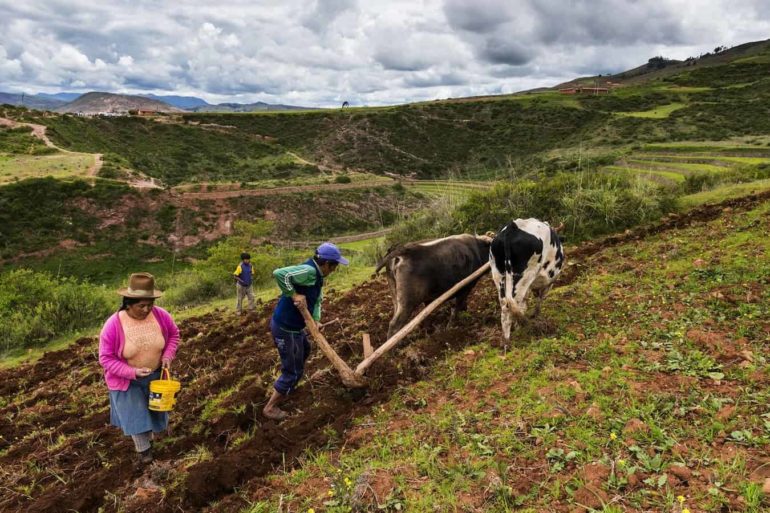Feeding the World: Think U.S. Agriculture Will End World Hunger? Think Again is a new report from Craig Cox and Anne Weir at the Environmental Working Group (EWG) that takes a close look at the United States’ agricultural export economy and its relationship to hunger and undernourishment across the globe. Its findings suggest that the root cause of hunger in the most undernourished countries is not a lack of imports from American farmers, but widespread poverty.
Authors Cox and Weir told Food Tank, “Since 2009, we have continued to hear a lot of agricultural interests claim that American farmers need to increase their production of commodities and meat products in order to ‘feed the world.’” Driven by concerns over how the call to intensify production to help curb hunger worldwide may obscure the environmental consequences of intensive forms of agriculture, Cox and Weir said, “We wanted to see if the U.S. is actually feeding those who are experiencing the highest levels of hunger.”
Through analysis of agricultural trade over the past decade, the authors demonstrated how the majority of U.S. agricultural exports do not contribute in a major way to the food supplies of the most undernourished countries. In the world’s hungriest countries, U.S. food exports, often as food aid, accounted for just 1.2 percent of the total food supply in the past ten years. The 19 hungriest countries received only one-half of one percent of the total value of U.S. agricultural exports in 2015. 59 percent of the goods exported to the hungriest countries were food grains like rice and wheat. And just two countries, Yemen and Haiti, received the majority of exported goods—63 percent—in the past decade.
By contrast, 86 percent of the total value of agricultural exports from the U.S. went to countries with low levels of hunger. The report finds that most of the top 20 importers of U.S. agricultural products have low hunger scores from the U.N. Food and Agriculture Organization (FAO), and medium to high scores for human development. Half the exports to these countries were of animal feed meat products, in contrast to the food grains directed towards the most undernourished countries.
“Discussing who U.S. agriculture exports are feeding is an important first step in beginning conversations about empowering small farmers and promoting agroecology. Since we know that U.S. exports aren’t ending world hunger and that people in these hungry countries mostly feed themselves, we can begin to discuss what can and should be done to help farmers in these countries do a better job of feeding themselves,” said Cox and Weir.
Rather than continue to intensify production in the U.S. to feed the world, the report suggests that supporting smallholder farmers through improving farm productivity and profitability, in part through promoting agroecology, holds promising potential in the fight to end world hunger. According to Cox and Weir “In the long-term, we would like to see a more fundamental transition to farming systems that enhance natural resources and the environment…food exports are just a small part of the issue. Helping smallholder farmers in these undernourished countries produce more of their own food and gain more income would be the best way we could help reduce levels of hunger.”















